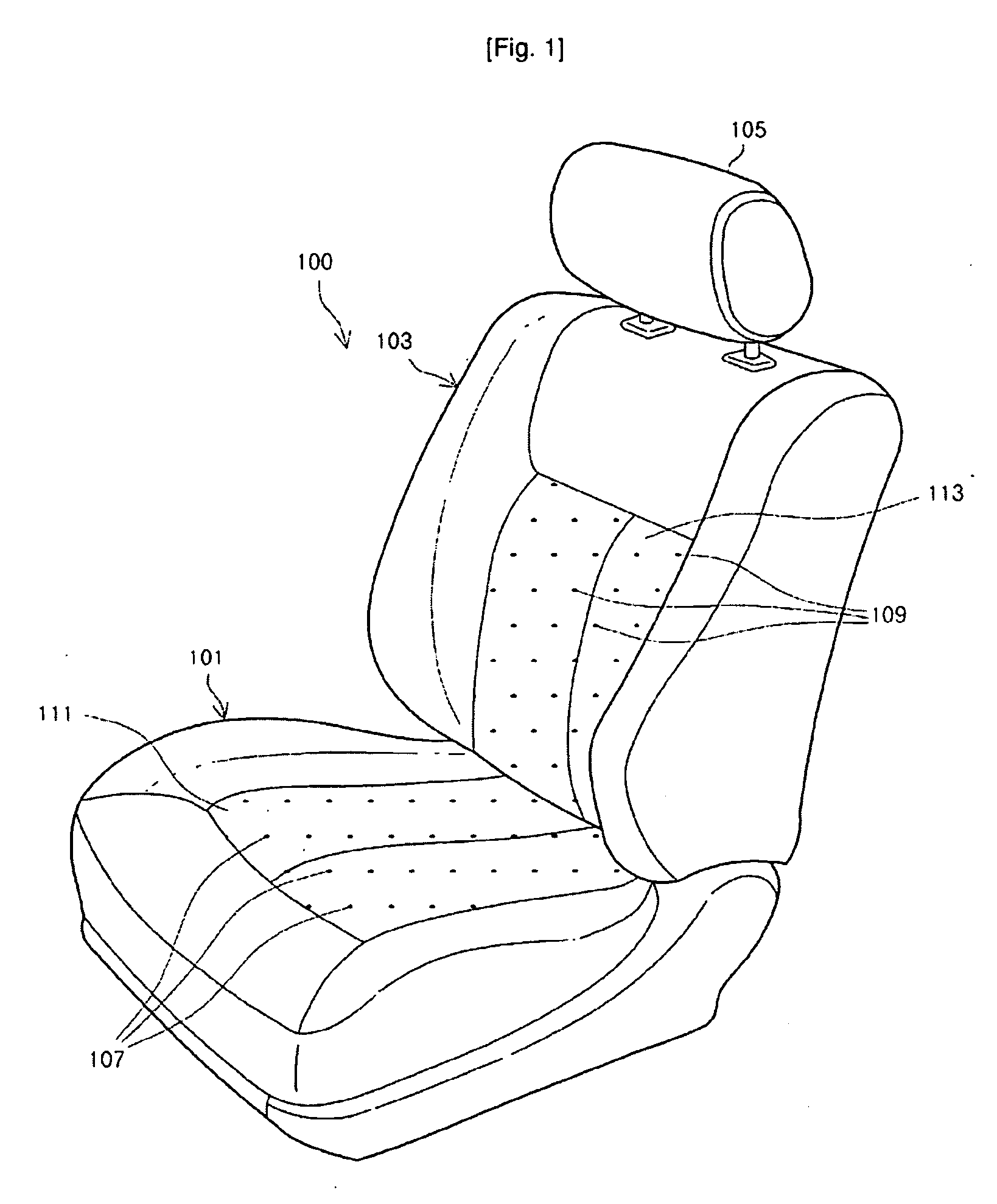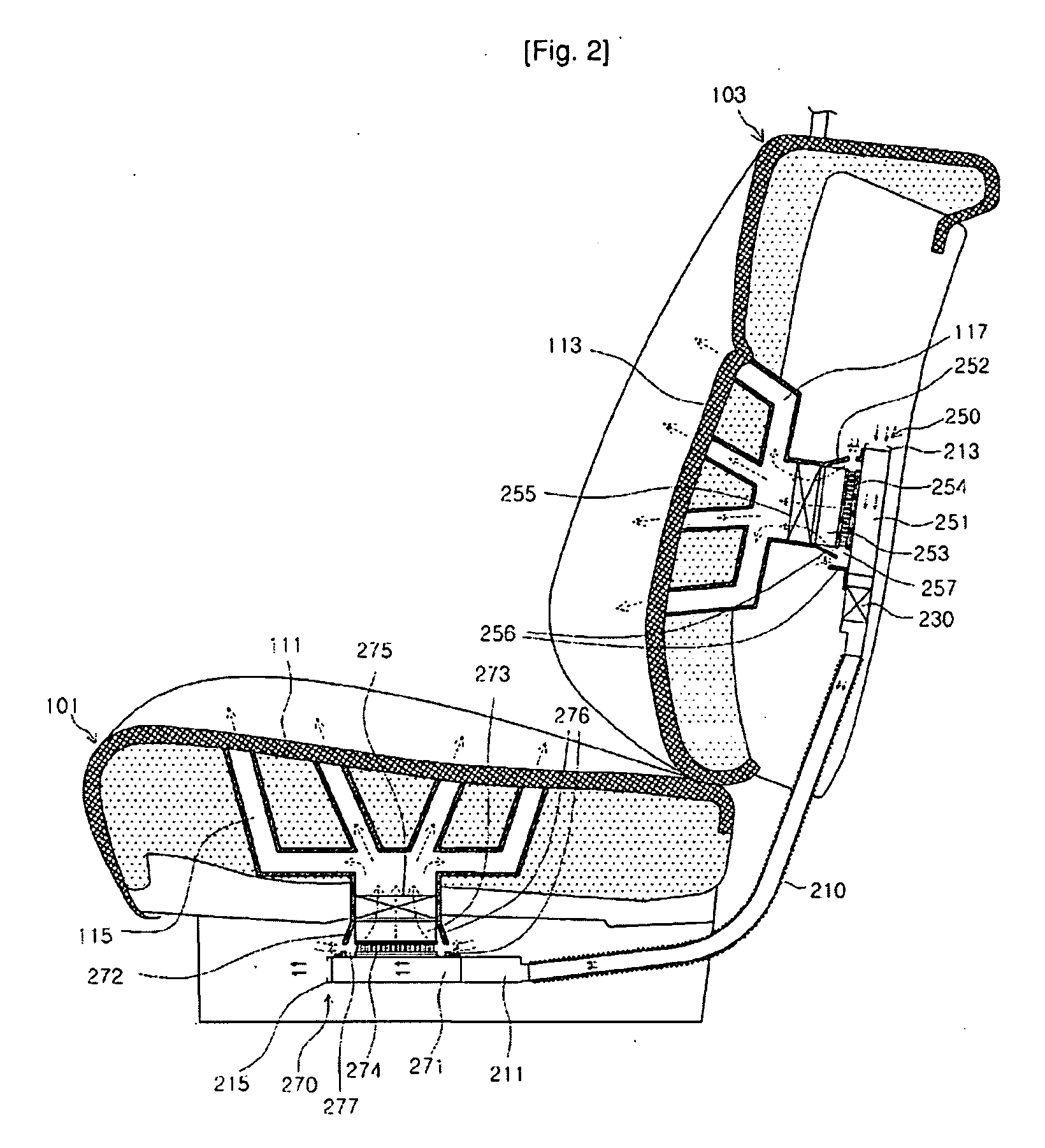Temperature control system for seat of vehicles
a temperature control system and vehicle technology, applied in the field of temperature control systems, can solve the problems of increasing electric power consumption, deteriorating cooling and heating performance, and difficulty in optimizing heating and cooling efficiency and integrating the system, so as to improve heat exchange efficiency, simplify the overall structure of the temperature control system, and optimize heat exchange efficiency
- Summary
- Abstract
- Description
- Claims
- Application Information
AI Technical Summary
Benefits of technology
Problems solved by technology
Method used
Image
Examples
Embodiment Construction
[0031]Hereinafter, embodiments of the present invention will be explained with reference to the drawings.
[0032]FIG. 1 is a perspective view of a vehicle seat 100 to which a temperature control system according to an embodiment of the present invention is adopted.
[0033]Referring to FIG. 1, the vehicle seat 100 includes a seat cushion 101 and a seat back 103. The seat cushion 103 is connected to the seat cushion 101 in a substantially vertical direction, and a headrest 105 may be connected to an upper end of the seat back 103.
[0034]The seat cushion 101 and the seat back 103 respectively include covers 111 and 113 to which air holes 107 and 109 are respectively formed. Air temperature of which is controlled by the temperature control system according to an embodiment of the present invention is emitted through the air holes 107 and 109 so that temperature of the seat 100 is controlled.
[0035]FIG. 2 is a cross-sectional view of a vehicle seat to which a temperature control system accordi...
PUM
 Login to View More
Login to View More Abstract
Description
Claims
Application Information
 Login to View More
Login to View More - R&D
- Intellectual Property
- Life Sciences
- Materials
- Tech Scout
- Unparalleled Data Quality
- Higher Quality Content
- 60% Fewer Hallucinations
Browse by: Latest US Patents, China's latest patents, Technical Efficacy Thesaurus, Application Domain, Technology Topic, Popular Technical Reports.
© 2025 PatSnap. All rights reserved.Legal|Privacy policy|Modern Slavery Act Transparency Statement|Sitemap|About US| Contact US: help@patsnap.com



